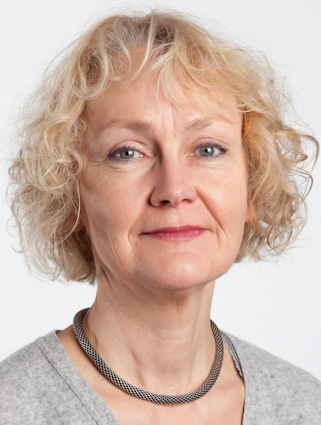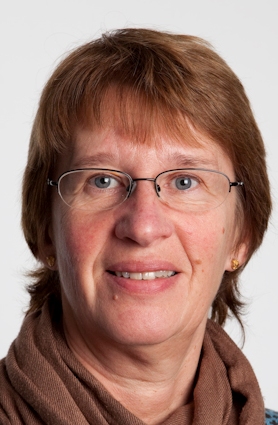No women on research centre boards
Five of the 14 Centres for Research-based Innovation (SFI) in Norway do not have women on their boards.

The midterm evaluation of the 14 Centres for Research-based Innovation (SFI) shows that 11 of the 14 SFI centres have gender-equality challenges. Five of the 14 centres do not have women on their boards.
“I think that the female representation on the SFI boards is alarmingly low. I don’t see any good reason for it. The principle that boards should consist of both women and men is ingrained in the Norwegian people. It should be a simple matter for the Research Council to improve the situation,” states Linda Rustad, Senior Adviser for the Committee for Gender Balance in Research.
The Research Council of Norway administers the SFI scheme. A total of NOK 200 million is allocated to the centres each year.
Lise Christensen, Senior Adviser in the Department for University and University College Policy at the Research Council, is not satisfied with the situation either.
“In general I think it is wrong that the boards of high-profile initiatives for promoting quality in Norwegian research are comprised only of men. It is unacceptable in the year 2011, and it is not in keeping with the principles regarding board composition that have been followed in Norway for many years. There must be a slip-up. I won’t speculate on the reasons why this situation has arisen, but it isn’t in keeping with our policy,” says Christensen.
Numerous challenges
The report shows that several of the SFI centres have major gender-equality challenges. The SFI centre “FACE”, organized under the Institute for Energy Technology at Kjeller, has no women on its board and no female doctoral or post-doctoral research fellows. At the Medical Imaging Laboratory at the Norwegian University of Science and Technology (NTNU), two of the eight board members are women, as are 30 percent of the doctoral research fellows, but the report states that the centre still has challenges related to gender balance.
The Centre for Research-based Innovation (SFI) scheme was launched in 2007. The purpose of the SFI centres is to strengthen innovation in trade and industry through cooperation between research-intensive enterprises and Norwegian research groups. The centres cover a wide range of fields, from petroleum and aquaculture to statistics and medicine. These centres receive NOK 200 million from the Research Council annually. Last year seven new SFI centres were established. The SFI guidelines state that the centres must take gender equality into account when recruiting personnel.
Future efforts

“I would say this evaluation shows that the centres are moving in the right direction, but that many of them have a long way to go. While we see a striking difference between the research fields, many of the centres have worked hard to improve the situation. For instance, they have set concrete target figures for recruitment and for the proportion of female research fellows. I want to give them credit for trying and for continuing to make an effort,” says Liv Jorunn Jenssen, who coordinates the SFI scheme at the Research Council.
“How should the SFI centres address the problem in the future?”
“They should continue with the efforts they have already begun. The centres were launched in 2007. At that time the overall recruitment situation for the research sector was difficult. Students preferred to work in private business rather than in research. The financial crisis improved the situation in that regard. Now the centres have their choice of candidates, and they must continue to work as they have been.”
“In 2007 additional funding was announced for gender-equality measures for the Centres of Excellence (SFF). Could this be an idea for the SFI scheme?”
“It’s something to consider. We haven’t discussed it in concrete terms. It would depend on whether the funding is available, which the SFI scheme does not have right now. In addition, the opportunities to participate in the SFI scheme would vary depending on the research field, because in certain fields there are almost no women to recruit. If the requirements are too difficult to meet, then SFI centres in those fields could not be established,” says Jenssen.
Target figures set
“The centres specify target figures for the recruitment of women in their plans. We require this, so they have them,” says Jenssen, adding that the SFI centres are not independent legal entities. All the centres must comply with the action plans for gender equality that apply at the institutions they are organized under. Some of the centres also have their own documents that describe their activities.
“What can you do to ensure that the plans are also followed up?”
“We receive reports on the centres’ target figures. The midterm evaluation contained a separate point on gender equality. What we can do to help them is to show that we are always keeping an eye on the situation, in addition to requiring updates on their progress,” states Jenssen.
“Will the SFI scheme require that women are represented on the boards?”
“The SFI centres receive public funding, so from that perspective the Research Council could require female representation on the boards. But we need to keep in mind that this could exclude some research fields from the scheme. We haven’t discussed it yet,” says Jenssen.
“The midterm evaluation is not consistent. The report states that one centre has ‘very few women on its senior staff’ without providing numbers and that the situation at another centre is ‘satisfactory’, also without any numbers. For other centres, the report gives an overview of the gender balance both on the board and among the employees. Shouldn’t the same information have been presented for all the centres?”
“The report was written by different international evaluation panels. Each centre had its own panel. We have not been involved at all in writing the individual reports. We only gave the panels a mandate and template for the reports, but all of them received the same basic material, and all the centres wrote about the situation for women in their annual reports. Still, the experts who conducted the evaluation only commented on what they felt was important to address,” says Jenssen.
She adds that the Research Council thinks there is a limit as to how many guidelines it can impose on international panels when they do a job of this type and that in any case all the information about the gender-equality situation is available from the basic material produced by the centres.
Expectations

Linda Rustad wants to see the Research Council take more decisive action.
“In my opinion, the Research Council should have the same high expectations for the Centres for Research-driven Innovation (SFI) as they had for the Centres of Excellence (SFF),” says Rustad, and points to the changes made to improve the gender balance at the Centres of Excellence after they were evaluated in 2006.
She also thinks that the recent evaluation should have given more information about the gender-equality situation at the SFI centres.
“I wish that the Research Council had prepared a condensed version of the evaluation focusing on gender equality since there is a huge difference between the various SFI centres.”
Rustad also raises questions about the Research Council’s future activities in this area.
“The Research Council has been good about incorporating gender equality in its plans and instruments. It can also document many positive results in a variety of areas, but the weak showing for the Centres for Research-driven Innovation begs the question of whether they are capable of following up their own intentions and plans,” Rustad states.
Translated by Connie Stultz.
